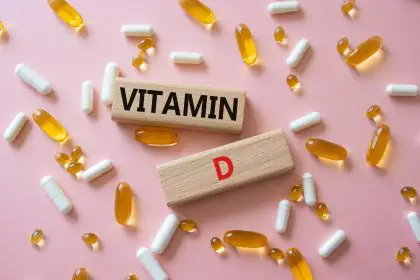New research reveals how specific lifestyle choices safeguard aging bodies against fractures and heart disease
What researchers discovered about aging bodies
A remarkable new study spanning two decades has revealed fascinating connections between what we eat, how we move, and our long-term health as we age. Researchers at the University of Southampton followed nearly 3,000 adults (average age 65) for 20 years, tracking their dietary patterns, activity levels, and health outcomes.
The findings paint a clear picture: what we put on our plates and how often we move our bodies dramatically shapes our risk of dangerous bone fractures and heart disease. With older Americans living longer than ever, these insights provide a roadmap for healthier aging through simple daily choices.
The dietary elements that protect aging bones
The study identified specific eating patterns linked to stronger bones and healthier hearts. The key dietary elements that made the biggest difference include abundant fruits and vegetables that formed the foundation of protective diets, providing essential vitamins and minerals that strengthen bone structure.
Regular consumption of whole grains delivered complex carbohydrates and fiber that supported overall health and reduced inflammation. Oily fish like salmon and mackerel appeared frequently in the diets of those with fewer health problems, likely due to their omega-3 fatty acids.
Limited intake of white bread and refined carbohydrates distinguished healthier participants from those with more medical issues. Minimal consumption of processed snacks like chips correlated with better long-term outcomes for both bone and heart health. Reduced sugar intake marked a significant difference between those who aged well and those who faced more health challenges.
The participants who embraced these dietary patterns experienced measurably better health outcomes, particularly regarding hip fractures – often a life-changing event for older adults.
The surprising numbers behind bone fractures
The twenty-year study revealed striking differences in fracture rates between men and women. By the study’s conclusion, 5% of women had experienced hip fractures, compared to just 2% of men. Looking at fractures of any type, the gender gap widened further – 22% of women suffered at least one fracture, while only 9% of men faced the same fate.
These numbers highlight the heightened vulnerability women face as they age, particularly after menopause when decreased estrogen accelerates bone density loss. For women especially, dietary choices that support bone health become increasingly crucial with each passing year.
The unexpected calcium revelation
One of the study’s most intriguing findings involved calcium, long considered essential for bone health. Surprisingly, higher dietary calcium intake didn’t significantly reduce hip fracture risk as many might expect. However, it revealed an unexpected benefit – protection against cardiovascular mortality.
During the follow-up period, 11% of men and 5% of women died from cardiovascular issues. Those with higher calcium intake showed better outcomes regarding heart health, suggesting that calcium’s benefits extend beyond just supporting our skeletal system.
This finding challenges the conventional wisdom that calcium primarily benefits bones, opening new perspectives on how nutrients serve multiple functions in aging bodies.
Why movement matters as much as meals
The research confirmed that physical activity plays an equally vital role in maintaining health during aging. Participants who maintained regular exercise routines throughout the study period demonstrated significantly lower risks for both fractures and heart disease.
For optimal bone health, weight-bearing exercises proved most beneficial – activities where your body works against gravity while your feet and legs support your weight. These include walking briskly through neighborhoods or parks, jogging on soft surfaces to minimize joint impact, dancing (which combines social enjoyment with physical benefits), strength training with weights or resistance bands, and yoga and Pilates to improve balance and prevent falls.
These activities stimulate bone formation, improve balance (reducing fall risk), and enhance overall cardiovascular health – creating a powerful defense against age-related decline.
How food and fitness work together
The study highlights how diet and exercise create synergistic effects when combined. Participants who both ate well and stayed active enjoyed the greatest protection against health problems.
This complementary relationship makes intuitive sense: exercise stimulates bone growth and strengthens the cardiovascular system, while proper nutrition provides the building blocks necessary for repair and maintenance. Neither approach reaches its full potential without the other.
For older adults, this means developing an integrated approach to health that addresses both movement and nutrition as equally important aspects of aging well.
Creating sustainable health habits after 60
Implementing lifestyle changes becomes increasingly important – but also potentially more challenging – as we age. Based on the study findings, health experts recommend starting with small, sustainable adjustments rather than dramatic overhauls.
Adding an additional serving of vegetables to daily meals before making other dietary changes is a good starting point. Beginning with short, 10-minute walks and gradually increasing duration as stamina improves makes exercise more approachable. Focusing first on eliminating obviously unhealthy foods like sugary drinks and highly processed snacks creates immediate benefits.
Incorporating balance exercises into daily routines, such as standing on one foot while brushing teeth, can significantly reduce fall risk. Experimenting with preparing oily fish in different ways helps find palatable options for important nutrients. Joining group exercise classes designed specifically for older adults combines social interaction with physical activity.
These graduated approaches prove more sustainable than attempting complete lifestyle transformations, which often lead to frustration and abandonment of health goals.
The inflammation connection
Recent research suggests that chronic inflammation may connect bone health and heart disease. Many foods identified as beneficial in the study – fruits, vegetables, whole grains, and fatty fish – contain anti-inflammatory compounds.
Conversely, the foods associated with poorer outcomes (refined carbohydrates, sugary treats, and highly processed foods) typically promote inflammation. This emerging understanding may explain why similar dietary patterns protect against seemingly unrelated conditions like fractures and heart disease.
By focusing on anti-inflammatory food choices, older adults may simultaneously address multiple health concerns with the same dietary approach – an efficient strategy for overall wellness.
Practical nutrition for aging bodies
Based on the study findings, nutrition experts recommend several practical approaches to support bone and heart health. Emphasizing leafy greens like kale, spinach, and collard greens delivers calcium along with vitamin K (essential for bone protein formation).
Including fatty fish such as salmon, sardines, and mackerel at least twice weekly provides omega-3 fatty acids. Choosing whole grains like oats, brown rice, and quinoa instead of refined alternatives supports overall health. Incorporating legumes (beans, lentils, chickpeas) regularly adds plant-based protein and fiber.
Selecting nuts and seeds as snacks rather than processed options offers healthy fats and minerals. If dairy consumption is limited, considering calcium-fortified plant milks and other calcium-rich alternatives ensures adequate intake of this important mineral.
These practical food choices align with the “prudent diet” associated with better outcomes in the Southampton study, offering a clear nutritional pathway for aging adults.
Future research directions
While this long-term study provides valuable insights, researchers acknowledge several limitations. As an observational study, it identifies associations between lifestyle factors and health outcomes without definitively establishing causation.
Additionally, dietary reporting relied on participant recall, which can sometimes prove unreliable. Future research using more precise measurement techniques may yield even more specific guidance for optimal aging.
Scientists plan further investigations into the precise mechanisms connecting diet, exercise, bone health, and cardiovascular function. These studies may eventually lead to more personalized recommendations based on individual genetic profiles, health histories, and specific risk factors.
The bottom line for aging Americans
The study delivers an empowering message: many aspects of aging remain within our control. Through thoughtful food choices and regular physical activity, older adults can significantly influence their health trajectory, potentially avoiding debilitating fractures and heart problems.
This research reinforces that it’s never too late to adopt healthier habits. Participants who improved their diet and exercise patterns partway through the study still showed benefits compared to those who maintained less healthy lifestyles.
For the growing population of aging Americans, this study offers both hope and practical guidance – a blueprint for maintaining independence and vitality throughout the later decades of life through straightforward changes to daily habits around eating and moving.

















